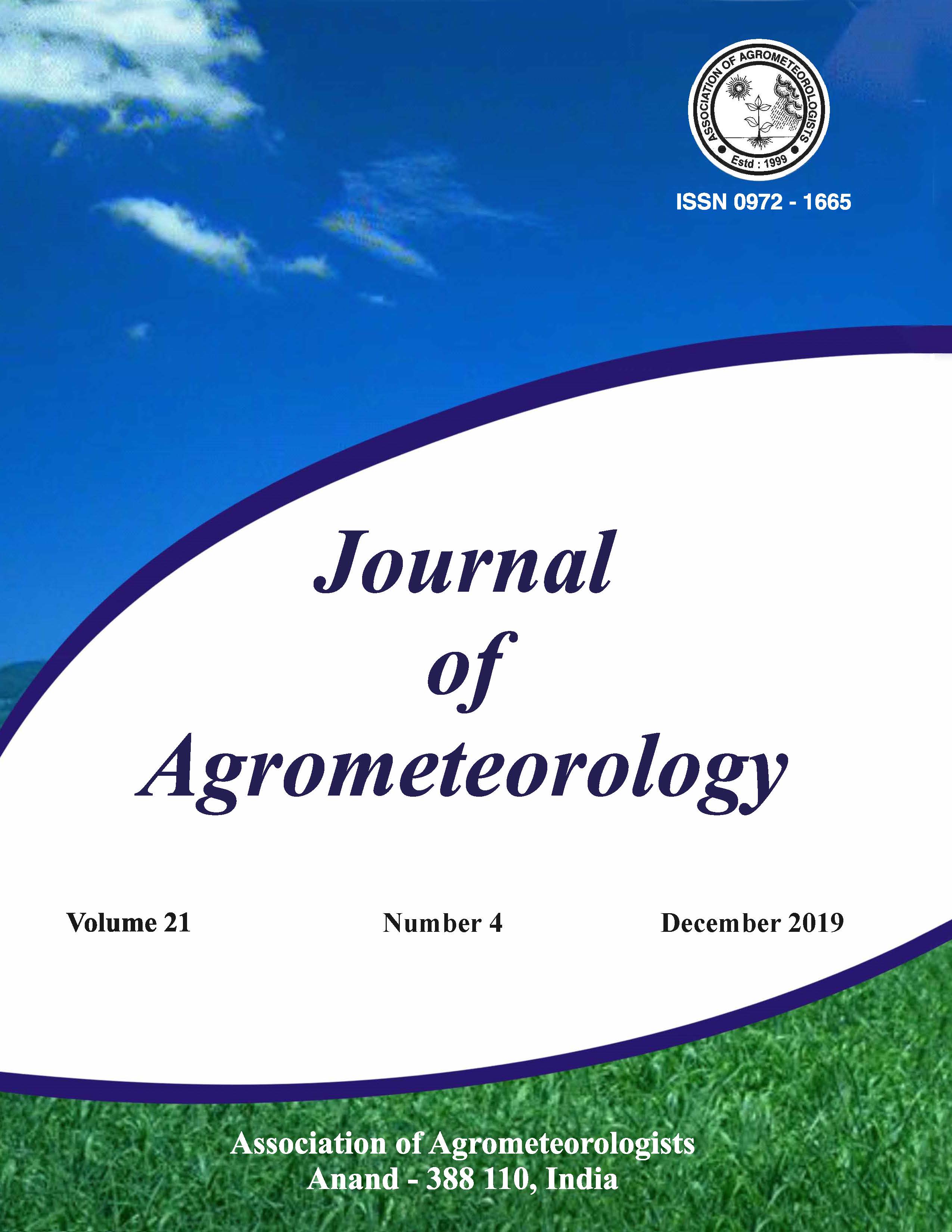Modeling of climate change in cold arid regions of north western Himalayas using multiple linear regression (MLR)
DOI:
https://doi.org/10.54386/jam.v21i4.283Keywords:
Calibration, climate change, global warming, MLR, validationAbstract
The present study aimed at modeling the impacts of climate change on precipitation and temperature and its trend in the context of changing climate in cold arid regions of north western Himalayas using multiple linear regression (MLR) model. The study was carried out in three different time slices viz., near future (2017-2045), mid future (2046-2072) and far future (2073-2099). The study includes the calibration of the observed climate data (maximum temperature, minimum temperature and precipitation) for fourteen years (2002-2015) and the outputs of downscaled scenario A2 of the Global Climate Model (GCM) data of Hadley Centre Coupled Model, (HadCM3) was used for validation, for the future. Daily climate (maximum temperature, minimum temperature and precipitation) scenarios were generated from 1961 to 2099 under A2 defined by Intergovernmental Panel on Climate Change (IPCC). During calibration, the maximum temperature, minimum temperature and precipitation showed decreasing trend. During validation, the maximum temperature showed an increasing trend in near future (2017- 2045) and decreasing trend in mid (2046-2072) and far future (2073-2099). While as, the minimum temperature and precipitation showed an increasing trend and decreasing trend respectively, in three futuristic phases. After validation, on comparison with the measured data, the variation in maximum temperature was found -2.59 oC in near future, -3.17 oC in mid future and -3.41 oC in far future. Similarly, for minimum temperature and precipitation, the variations with observed data were found 0.91 oC and -32.2 mm, respectively in near future, 2.01 oC and -34.6 mm, respectively in mid future, 4.08 oC and -3.4 mm, respectively in far future. These changes may be found due to global warming which lead to decrease in average annual precipitation and increase in average minimum temperatures causing the melting of glaciers.
Downloads
Published
How to Cite
Issue
Section
License

This work is licensed under a Creative Commons Attribution 4.0 International License.
This is a human-readable summary of (and not a substitute for) the license. Disclaimer.
You are free to:
Share — copy and redistribute the material in any medium or format
Adapt — remix, transform, and build upon the material
The licensor cannot revoke these freedoms as long as you follow the license terms.
Under the following terms:
Attribution — You must give appropriate credit, provide a link to the license, and indicate if changes were made. You may do so in any reasonable manner, but not in any way that suggests the licensor endorses you or your use.
NonCommercial — You may not use the material for commercial purposes.
ShareAlike — If you remix, transform, or build upon the material, you must distribute your contributions under the same license as the original.
No additional restrictions — You may not apply legal terms or technological measures that legally restrict others from doing anything the license permits.
Notices:
You do not have to comply with the license for elements of the material in the public domain or where your use is permitted by an applicable exception or limitation.
No warranties are given. The license may not give you all of the permissions necessary for your intended use. For example, other rights such as publicity, privacy, or moral rights may limit how you use the material.





